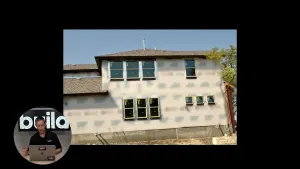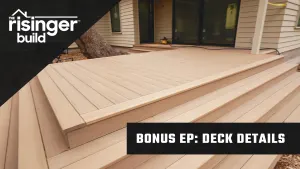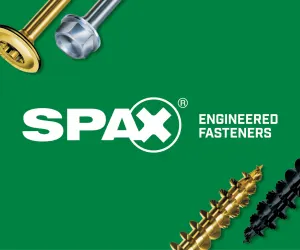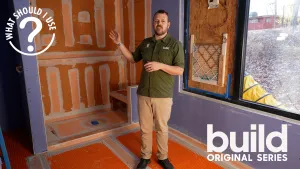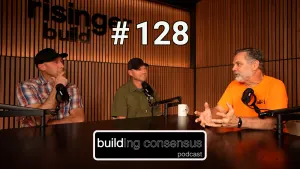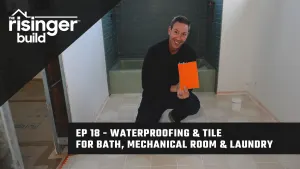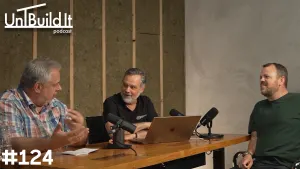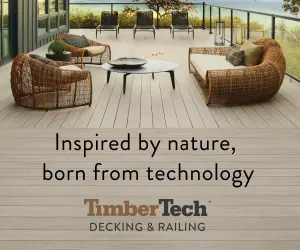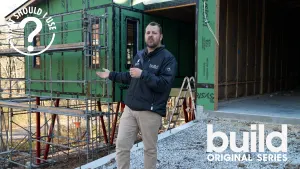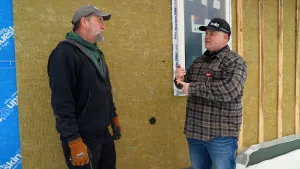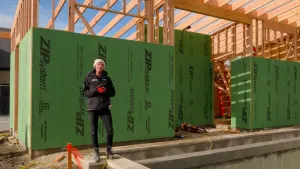Need extreme strength? Consider LVL studs. In this video, Matt Risinger, master builder, takes us to an LVL framed house where traditional lumber is swapped out with LVL studs. Typically, we think of LVL in terms of door and window headers or beams. In this case, however, the entire house is LVLs. The main goal was strength. On an outside wall we have LVL studs, ½" Advantech sheathing that's glued to the studs and some serious hold downs including hurricane straps on the rafters. At each of the rafters there's a telltale hole where a Simpson screw goes all the way up through that double top light and into the rafter to hold everything together. We wanted to design a house to withstand 110 mph wind. In addition to survival, there's other pros to framing with LDL. LDL is super strong and super straight and super heavy. It yields super straight walls and a very solid feeling to the home. Inside, everything is glued together with Advantech glue on sheathing and outside walls. All is nailed together, although that takes a lot of pressure to nail LDL. It takes a lot of crew effort to muscle LDLs. Other cons include it's expensive, it doesn't come pre-cut. In this case, it came off of a truck and had to be hauled to a bench to be cut. This house is made of only engineered materials. There's very little ability for water to leak into the house because of a lot of precautions on the outside to make sure that this house stays dry. If you're building in a hurricane zone, or you just want that house that will withstand extreme weather, this is one way to achieve it.
Search Content
Use the search bar above, explore content using the categories below, or log in to find your favorites.
Create An Account
Thank you for choosing to create an account with us.
Please note that creating an account is optional, but helps us better tailor the content we show you.
Please enter your email address and choose a password.
Choose Areas of Interest
Please tell us a little more about your profession.
This is optional, but lets us better tailor content to your specific interests.
You can read our policy on data collection and privacy here.
Channels that Interest You
Finally, check which channels interest you so you can see more relevant content. Choose as many as you like. You can also come back here and edit these settings later.

 Share on facebook
Share on facebook Tweet
Tweet Email
Email Share on Linkedin
Share on Linkedin




